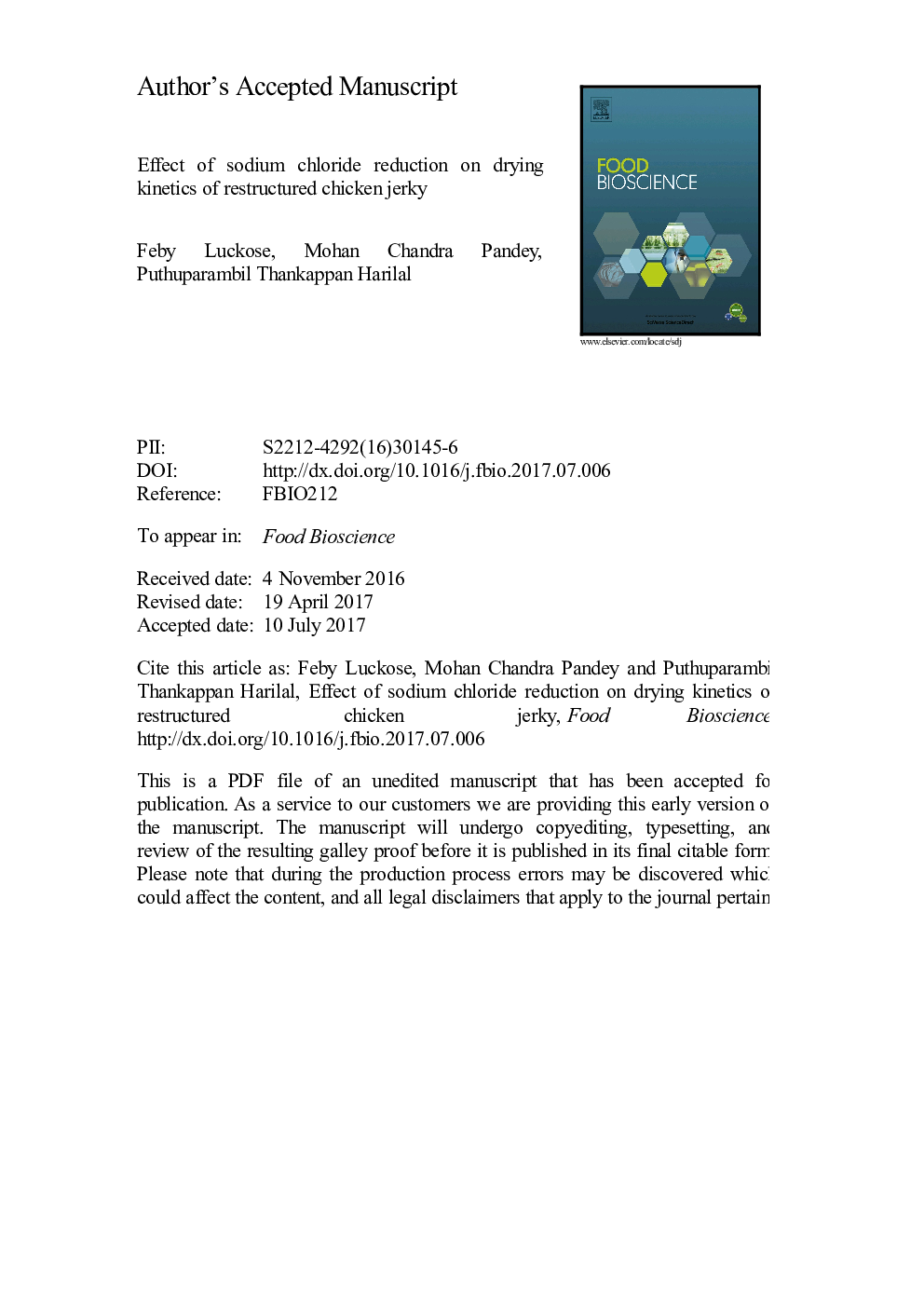| Article ID | Journal | Published Year | Pages | File Type |
|---|---|---|---|---|
| 4753109 | Food Bioscience | 2017 | 30 Pages |
Abstract
In this study, the effect of 50% sodium chloride (NaCl) reduction on the drying behaviour of restructured chicken jerky was investigated. Jerky slices were dried at 65 °C, 75 °C and 85 °C in a hot air oven and changes in mass were recorded every hour. Drying of jerky took place in falling rate period and drying rate was accelerated on reducing sodium chloride content and increasing air temperature. Moisture diffusivity and activation energy increased on bringing down the NaCl level from 2% to 1% in the samples, but addition of Potassium chloride (1%) to low sodium jerky helped to attain values for these parameters closer to those of control (2% NaCl). The variations of moisture ratio with time were used to test nine thin layer drying models given in literature in order to find the model that could best describe mathematically the drying behaviour of chicken jerky. Logarithmic model was found to be most suitable to represent chicken jerky drying kinetics (for all treatments) with a very high correlation coefficient value of 0.99 and low chi-square and root mean square error values. As far as physical properties were concerned reducing NaCl content led to increase in L* values (hunter colour parameter for lightness), % shrinkage and shear force values. These changes were to a great extent diminished by the addition of potassium chloride, hence, making it a suitable sodium chloride replacement strategy.
Related Topics
Physical Sciences and Engineering
Chemical Engineering
Bioengineering
Authors
Feby Luckose, Mohan Chandra Pandey, Puthuparambil Thankappan Harilal,
